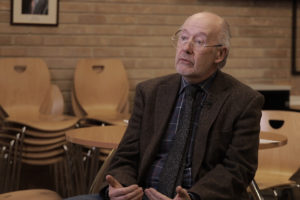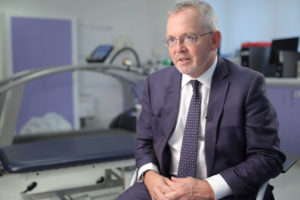Bipolar Disorder
Psychiatrist Guy Goodwin on the causes of bipolar disorder, why manic episodes are so dangerous and what medic...
Which diseases can be treated with induced pluripotent stem cells? What are the problems of treating Parkinson’s disease without IPS cells? Professor of Biology at MIT Rudolf Jaenisch discusses various applications of stem cells in medicine.
The first experiment to show therapeutic cloning works was actually done in my laboratory, beginning of 2001. That was therapeutic cloning experiment in mice, so no human of course. In mice experiment was the following: we had a mutant mouse, which head due to mutation no peripheral immune cells, no peripheral B & T cells, it had a combined immune deficiency, it’s a very serious disease. So with that one we did the following: took the skin cells from this mouse, did nuclear transfer, derived a nuclear transfer, derived embryonic stem cell, then we used gene targeting, homologous recombination, to correct the gene, which was defective, differentiated these cells to blood stem cells, put them back into the mouse, there they incorporated into the bone marrow and cured the mouse, they had suddenly in all immune system. So nuclear transplantation worked, it was great, was a proof-of-principle experiment.
Group in Alabama made a mouse, which had the human globin, while it was a sickle version, inserted inside the mouse, so exchange or mosaic or anything. And these mice got sickle-cell anemia, like the human. It was really with the human gene. So we thought we’re going to use that to cure that mouse in a proof-of-principle experiment. So we took again the skin cells from this mouse, reprogrammed and made IPS cells, it was pretty straightforward, we knew how to do that, then we used gene targeting, homologous recombination, to correct the point mutation in the globin gene, so make it the mutant to wild copy, differentiated those to bone marrow stem cells and put them back. It was amazing! It cured these mice of their sickle-cell anemia most efficiently. They were really cured, stably cured.
How do you make the cells you want to put into a patient? The Parkinson’s patients have death of dopaminergic neurons, which lead to this movement disorder. And clinical trials have shown if you generate these neurons from aborted human fetuses and inject those into the part of the brain, the substantia nigra, they can relieve the symptoms, so very interesting clinical trials in Sweden. The problem is you needed you need the brains of 12 aborted fetuses for one patient. So you can see already is almost hopeless to coordinate this and to have quality control on all this.

Psychiatrist Guy Goodwin on the causes of bipolar disorder, why manic episodes are so dangerous and what medic...

Professor Emery Brown of MIT on what has to be monitored during anesthesia, side effects of inhalational anest...

Epidemiologist Nick Wareham on metformin, preventive therapy of diabetes, and metabolism in obese people